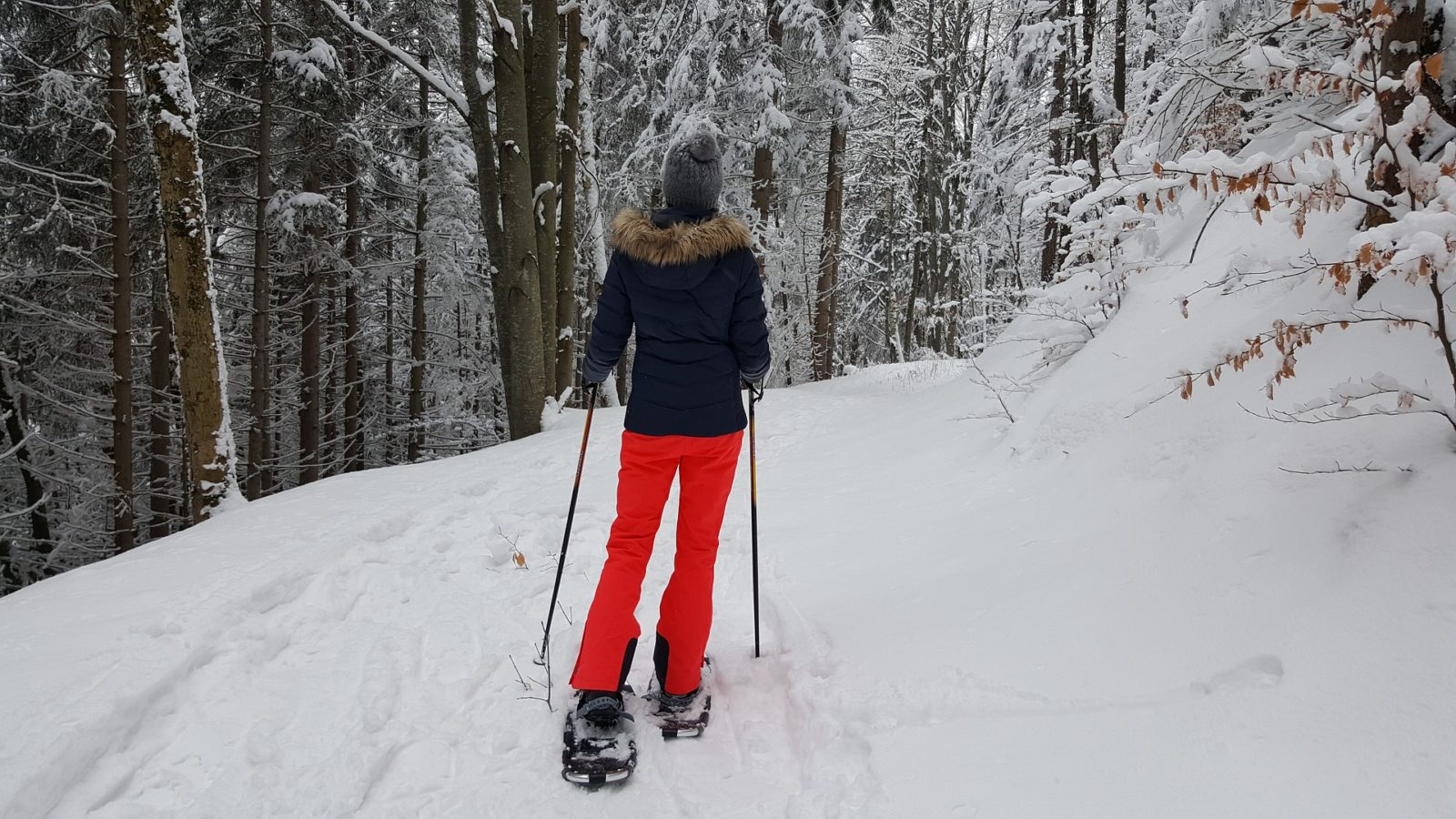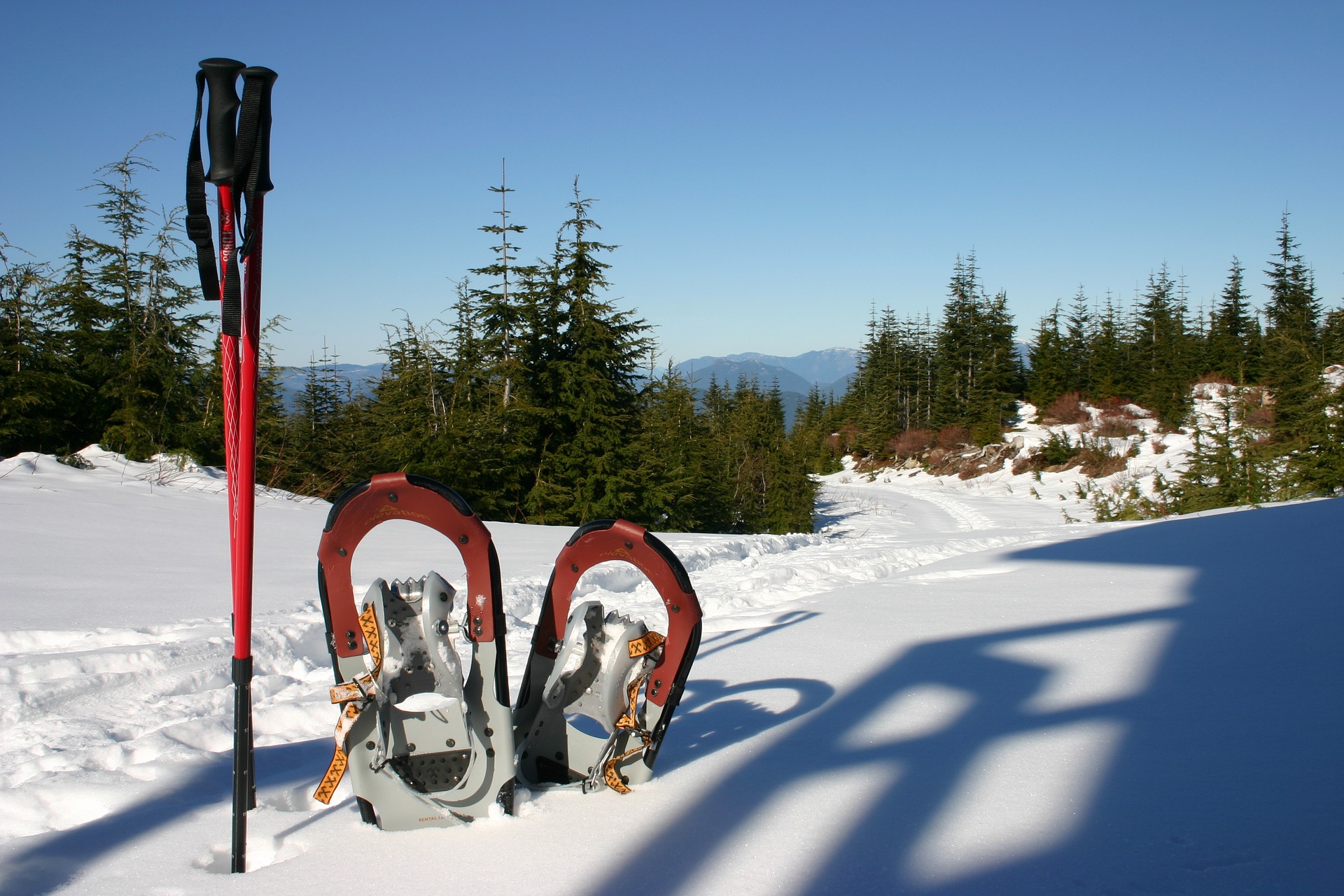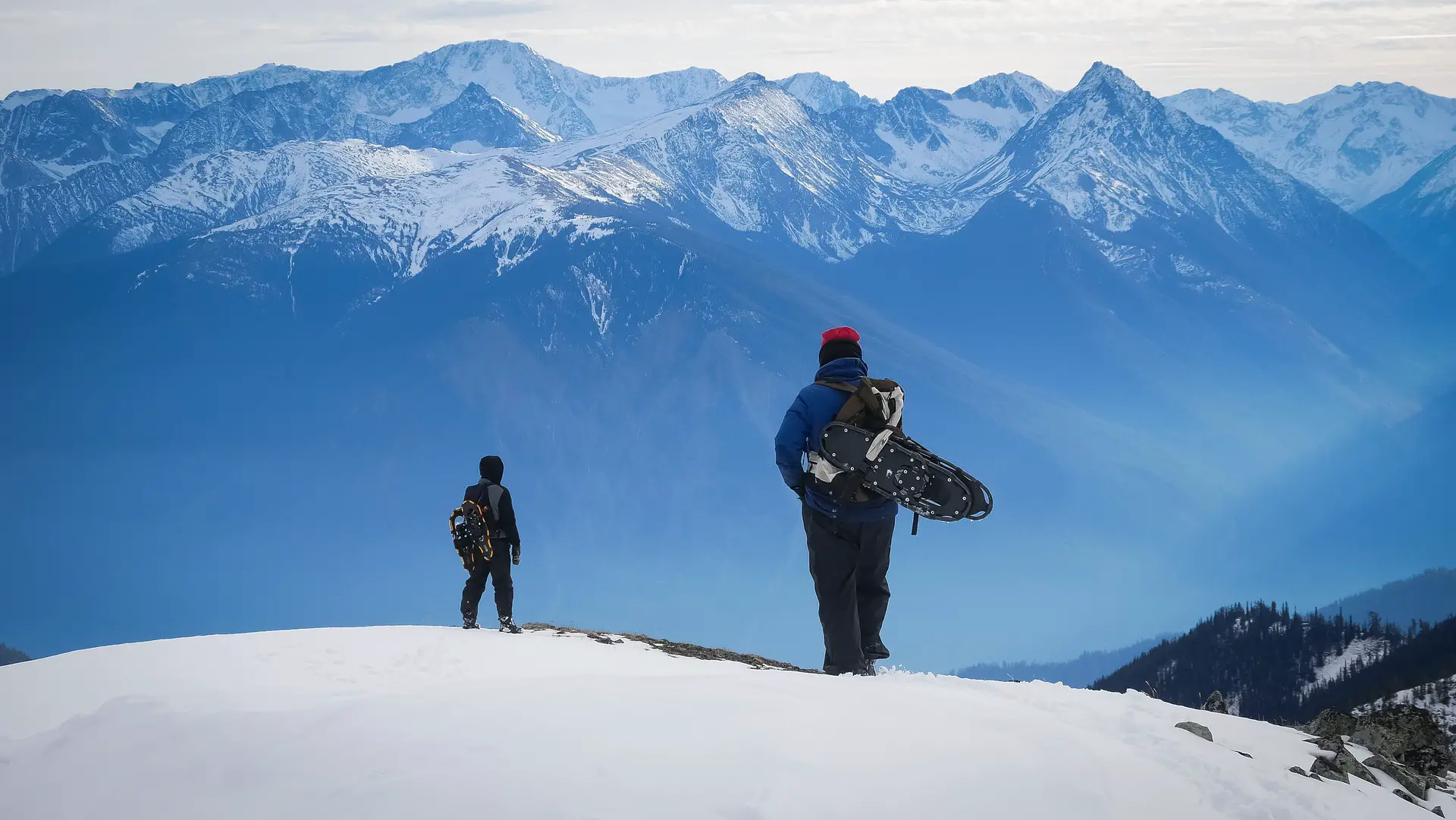If you’re shopping for snowshoes, you’ve probably noticed that many good-quality pairs are pretty pricey. Most models will be over $150 and some are quite a bit more than that!
When you’re looking for the best snowshoeing gear on a budget, these price tags raise the question of “Why are snowshoes so expensive?” You should know exactly what that extra money is getting you when you purchase gear for this fun winter sport.
We answer all of your questions about what makes some pairs of snowshoes so expensive. We cover what features affect the cost of snowshoes, whether you should buy or rent your snowshoes, and provide some recommendations for budget-friendly snowshoes.
How Much Do Snowshoes Cost?
Like most other winter outdoor gear, snowshoes aren’t cheap. For a good quality pair of snowshoes, you should expect to spend between $150 to $250, on average.
Of course, you will find cheaper pairs of snowshoes out there. On websites like Amazon, you’ll often find snowshoes under $100. You might even find pairs of snowshoes as cheap as $50! Unsurprisingly, many of these super inexpensive snowshoes are built with low quality materials and won’t last long before breaking.
Snowshoes also get much more expensive, with top models even exceeding +$400. Unless you’re getting into some technical backcountry snowshoeing, you probably won’t need a pair this pricey, though!
Whether or not you buy snowshoe poles or other snowshoeing gear (e.g. gaiters) will also factor into the starting price of snowshoeing. While not always necessary, this extra gear is often important for those going on longer hikes.
Why Are Snowshoes So Expensive?
Winter outdoor gear is often expensive, and snowshoes are no exception. While snowshoeing won’t make as big of a hole in your pocket as other winter sports (like snowboarding or skiing), it’s still costly to get started if you choose to purchase your own gear.
There are many good reasons why snowshoes are often expensive. From the materials to the structural design, these features play a huge role in the quality and functionality of your winter gear.
Below, we discuss features that affect the price and quality of snowshoes, answering the question as to why some snowshoes are so expensive. Hopefully, this will help you decide whether it’s worthwhile spending a bit more on a pair of snowshoes, or whether you want to compromise on these features for a lower price point.
1. Durability
With a higher price point, you are often paying for improved durability of your gear. More expensive snowshoes tend to last longer and often will endure rougher use. That’s not to say that they won’t break eventually, but they should last you for quite a few seasons of use.
While cheap snowshoes are more affordable upfront, you’ll likely end up paying more in the long run. Inexpensive snowshoes are prone to breaking, meaning you’ll have to replace them more often. Some cheap snowshoes will even break the first time you use them!
On cheap snowshoes, bindings often break, preventing your snowshoes from attaching to your boots. Cracked decks or bent frames are common, making you sink into the snow. And, the weak crampons (metal spikes on the bottom of snowshoes) on cheap snowshoes bend easily, causing your snowshoes to not grip the snow properly.
Good-quality snowshoes are designed to take a beating. They need to be reliable, especially on longer hikes. Trust us, you don’t want to get stuck kilometers into the backcountry with broken snowshoes!
2. Design
Snowshoes are just made for walking in snow so there must only be one design, right? Wrong!
There are actually several different styles of snowshoes, each with different features that affect both their functionality and of course — their price. Here are the main snowshoe designs:
Flat Terrain Snowshoes are created with the casual user in mind. These snowshoes have a simple design and limited features. They usually have a basic fixed binding system, simple crampons, and no heel lift. For this reason, they are usually the most affordable design, but not suitable for hilly terrain.
Rolling Terrain Snowshoes are a mid-range priced style that are designed to handle flat to moderate slopes. These snowshoes have a binding system that’s easy to adjust, and stronger crampons that provide better traction. Many models will also have a heel lift to help with hills.
Mountain Terrain Snowshoes are the most technical style of snowshoes and have a higher price to reflect this. This style is designed to help you tackle steep slopes and icier trails. The binding system is better so they work with larger boots. The crampons are strong and aggressive for improved grip.
Running Snowshoes are pretty niche, designed for the subset of people who want to run on snowy trails. Built for speed, these snowshoes are lightweight and small, but definitely fall on the pricier side of things.
So, which design of snowshoe should you choose? You’ll need to think about which style best fits your needs, based on which trails you think you’ll end up snowshoeing.
If you only plan on short, easy hikes around the city, flat terrain snowshoes are likely sufficient for you. But, if you’re tackling hills, longer hikes, or need some extra traction, you should fork out a few more dollars for some rolling terrain snowshoes that won’t limit your treks. And, for the alpine wilderness adventurers, paying extra for mountain terrain snowshoes is important.
3. Weight
More expensive snowshoes tend to be made out of lightweight but durable materials, meaning you can snowshoe more efficiently and go for longer hikes without getting as tired. Cheaper snowshoes are often heavier, making each step feel like more work.
On a short walk, heavier snowshoes don’t seem like a big deal. But, we promise that you’ll definitely be feeling that extra weight on a long trek or in deep snow.
Heavy snowshoes are exhausting to use, weighing your feet down with every step. Lighter snowshoes just make this winter sport so much more fun!
4. Brand
Like most gear purchases, brand name does play a role in the price. Well known snowshoe brands, like MSR and Atlas, often sell at a higher price point and part of that is just due to their reputation.
Of course, that reputation is often built on a foundation of reliable, good quality products. Many of these brands also stand behind their products, providing excellent customer service in case your gear breaks due to a manufacturing mistake.
Other companies do produce functional snowshoes, but sometimes it’s a shot in the dark as to whether your snowshoes will be durable. Just check some of the reviews on Amazon for the cheaper, lesser known companies — some people love their snowshoes from these brands but way more people end up hating them!
For those looking for a company that produces high quality snowshoes, we highly recommend MSR (the MSR Evo Trails are a great affordable option). They create some of the best snowshoes out there, which are well worth the money and should last you many years!
5. Binding Systems
More expensive snowshoes have better quality binding systems (the straps and platforms that keep your feet on the snowshoes) than inexpensive ones. You don’t want to have to be adjusting your snowshoe bindings constantly because they keep loosening. And even worse, you don’t want to find yourself with broken snowshoe bindings in the middle of the backcountry!
Many cheaper snowshoes have straps with plastic clips that easily clog with snow and make them difficult to tighten or loosen, especially with gloves on. They also break easily and generally just don’t work well.
Advanced binding systems on pricier models do a much better job of securing your foot to the snowshoe. This means that the bindings last longer, are easier and faster to use, do a better job of keeping your boots snugly attached to the snowshoes, and don’t get stuck with snow, among other benefits.
Also, many cheaper snowshoe binding systems can’t be changed out if they break. Basically, if your bindings break, you’ll need to buy a whole new set of snowshoes — which can be pricy!
Luckily, some snowshoe companies (e.g. MSR) have designed their bindings to be replaceable. If you only need to replace your bindings instead of the entire snowshoes, you’ll save some money!
6. Technical Features

More expensive snowshoes often have additional technical features that make trekking through the snow much easier. Some of these features aren’t necessary for the casual snowshoer, but are vital for those who wish to tackle the more difficult backcountry trails.
Some technical features you might find on more advanced snowshoes include:
- Heel lifts (aka climbing bars) fold out under your heel to make going uphill easier, both relieving some of the strain on your calves and make you move more efficiently. They flip down when not in use.
- Snowshoe tails are an MSR accessory that attach to the end of your snowshoe, providing extra length for floatation in powdery snow.
- Side rails (aka traction bars) for added lateral stability
- Braking bars to prevent your snowshoes from sliding down hills
- Extra/better quality crampons on the heel
7. Comfort
Spending hours wearing snowshoes while trekking through the backcountry? You want your snowshoes to be as comfortable as possible!
The quality and design of your snowshoes play an important role in your comfort while snowshoeing. Cheap snowshoes can create pressure points (e.g. from poor quality binding systems), leading to blisters. You might find them poorly designed for comfortable walking, causing you to stop sooner than planned.
Inexpensive snowshoes often lack features that make snowshoeing easier, leading to a less fun experience. Most lack a heel lift or traction features that make climbing hills easier. Their floatation might not be good, causing you to sink deep into the snow. As well, with cheaper pairs, snow often builds up underneath (or on top of) the snowshoe, making each step more difficult. This is exhausting over long hikes!
In some cases, cheaper snowshoes could also be unsafe to use — for example, if their poor traction leads you to slip and fall.
Higher-priced snowshoes tend to be more comfortable to wear, especially for longer hikes. They’ll keep you from sinking deep into the snow, tripping over your own feet, and will reduce leg fatigue through technical features like heel lifts.
8. Warranty
Another thing that affects a snowshoes pair’s price is the warranty that the company provides with it. A good warranty saves you a lot of headache if your gear breaks!
Many less expensive snowshoes only have a year long warranty. If you buy your gear in the summer, this means you would only have one winter season to use it before your warranty runs out.
It’s definitely worthwhile having a warranty on your outdoor gear, from a reliable company. We’ve had to go through the warranty process twice for outdoor gear (for a sleeping pad and snowshoe poles). Both times, we’ve been very grateful that the warranty coverage replaced the gear and that we didn’t have to buy new items!
Good quality companies provide lengthy warranties, fixing or replacing any broken gear (only if it’s not caused by misuse, neglect, poor maintenance, or natural wear and tear). For example, MSR has a THREE year limited warranty!
Some more eco-friendly and sustainable companies even go as far as providing repair and maintenance services. This is a great way to keep your gear out of the landfills!
So, Are Snowshoes Worth It?

So, are expensive snowshoes worth the extra money? Should you invest in a good quality pair of snowshoes or stick with a more affordable pair?
To answer those questions, generally yes, the pricier pairs are worth the extra dollars — to a certain point, of course. Snowshoes are a one-time purchase that’ll last you a long time. While you likely don’t need one of the priciest models out there (unless you’re doing technical treks), a good mid-range priced snowshoe is worth every penny.
You get what you pay for with snowshoes. More expensive snowshoes are made with higher quality materials, better designs, more technical features, and are just all-around more reliable and comfortable to use.
A good pair of snowshoes could be the difference between you enjoying or hating a snowshoeing adventure. Also, if you like snowshoeing, you’d likely end up spending more money in the long term if you initially purchase cheaper snowshoes, especially if they break or don’t work well and you need to replace them.
On the other hand, cheaper snowshoes can still work well. If you don’t snowshoe that often or only go on short, easy hikes, you probably don’t need an expensive pair of snowshoes (unless you’re heading up a mountain).
What Are Some Affordable Snowshoes?
If you’re buying on a budget, you’ll have to find a happy medium of cost and quality to find the perfect pair of snowshoes for you. Here are some affordable snowshoe options:
1. MSR Evo Trail Snowshoes
MSR Evo Trail Snowshoes are designed by a good quality brand and have great value. They are lightweight, feature an easy-to-use mesh binding system, and are quite durable. While they aren’t the cheapest snowshoes out there, they are still quite affordable and worth the extra dollars.
2. Tubbs Flex STP Snowshoe
Tubbs Flex STP Snowshoes are another good quality, affordable pair of snowshoes. Their composite deck is durable and quiet while walking. The Flex tail reduces the shock on your joints while snowshoeing. With traction rails and crampons, and a quick pull binding system, these are a good option for anyone looking for a budget-friendly snowshoe.
3. Atlas Helium Trail Snowshoes
Atlas Helium Trail Snowshoes are lightweight, durable, and inexpensive. These unique snowshoes have a louver design that reduces their weight and helps snow fall off them (but this does affect their flotation a bit). They also have heel lifts for hills and several length options.
How Much Does Renting a Pair of Snowshoes Cost?
Keep in mind, you don’t need to commit to buying snowshoes to try this fun winter sport. You have the choice between buying your own pair of snowshoes or renting a pair from a local outdoor equipment store.
So, if you decide to rent a pair of snowshoes, how much should you expect it to cost?
Generally, snowshoe rentals will cost between $10 to $20 per day. This price does vary between rental companies, but it shouldn’t be much more than this.
Should You Buy or Rent Snowshoes?
Wondering whether you should buy or rent snowshoes? Here are some pros and cons of each!
Buying Snowshoes
Pros
- Costs less over time if used frequently
- Always available (don’t have to reserve gear)
- Easy to spontaneously leave the house for snowshoeing (don’t have to plan ahead)
- No time limit on how long you can use them
- Can loan them out to friends and family
Cons
- Higher upfront cost
- Takes up storage space
- Must be replaced or repaired if broken
Renting Snowshoes
Pros
- Costs less if you only go a couple times
- Gear is usually good quality
- Don’t have any maintenance/repair costs
- Allows you to try out snowshoeing without investing in gear first
- Lets you try different styles or brands of snowshoes before buying
Cons
- Costs more over time if you go snowshoeing regularly
- More planning involved (must reserve them in advance)
- Not always available
- Limited to the rental duration (i.e. no spontaneously extending your snowshoeing trip)
- Must pick the snowshoes up and drop them off at the rental shop
Final Thoughts
Hopefully this article helped to clarify why snowshoes are often so expensive, providing you more insight into why certain models are priced the way they are. Keep these factors in mind when deciding on your pair of snowshoes!
Of course, you probably don’t want to jump right into buying a pair of expensive snowshoes unless you’ve tried the sport first. We highly recommend renting a pair of snowshoes for a day or two to determine whether you think snowshoeing would be a good fit for you.
When you are ready to buy a pair of snowshoes, you’ll have to decide whether you want to choose a pair for the price, quality, or something in between. If you can afford it, there are many mid-range priced snowshoes to choose that will get you on the trails reliably without breaking immediately or being frustrating to use.





